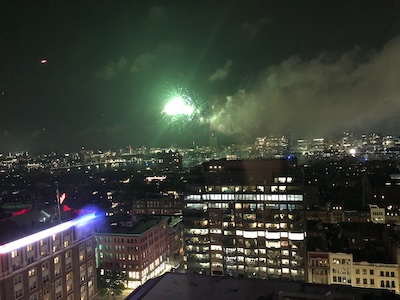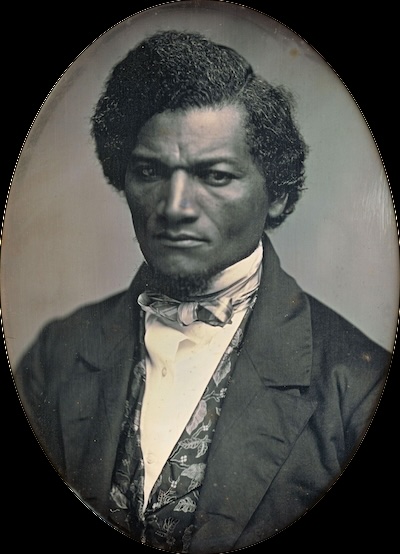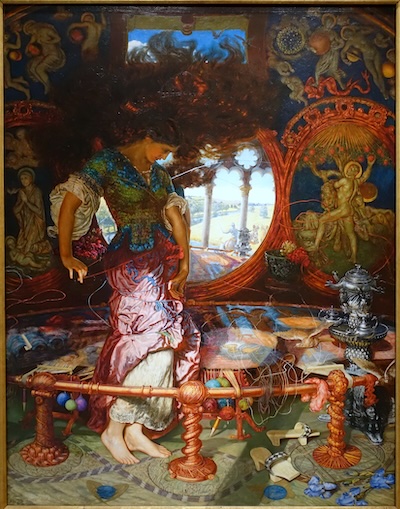2024-July-04
Tagged:Beauty
/
Food
/
Politics
/
Sadness
So… the 4th of July, here in the US?
American Independence Day, Chez Weekend
[Yes, I’m posting the next day. Just deal with it, ok?]
Chez Weekend, we didn’t make too big a deal out of the holiday. Too many of our friends were out of town to invite people over, so it was just us and the cats.
In hydrangeae, veritas

 It appears that this is a monster year for hydrangeas in New England. There are so
many flowers, though mostly of moderate size. The venerable Globe has taken
Official Notice [1], and explained that it is due to the mild
winter last year. (The pictures in the article are worth your time, so by all means click
through the reference below. The 2nd photo shown here – click to embiggen –
is not a botanical display or gardening club; it’s just some a planting in front of J
Random Law Firm.)
It appears that this is a monster year for hydrangeas in New England. There are so
many flowers, though mostly of moderate size. The venerable Globe has taken
Official Notice [1], and explained that it is due to the mild
winter last year. (The pictures in the article are worth your time, so by all means click
through the reference below. The 2nd photo shown here – click to embiggen –
is not a botanical display or gardening club; it’s just some a planting in front of J
Random Law Firm.)
Apparently hydrangeas, in a fit of ill-planned reproductive exuberance, set buds in the autumn. Only the ones that survive winter get to bloom the next summer. Now, in some respects, last winter was a complete disaster here, with almost no snow at all and obscenely warm. (Yes, climate change is coming for us all.) This means most of the hydrangea buds survived, making a fantastic display this summer. (Though, as is my wont, I mutter darkly about what other ecological changes are less visible and far less pretty.)
The word comes from Greek hydros + angos = water jar; no idea what to make of that other than that they need a lot of water. Victorian “flower language” was pretty negative: they were “boastful”, or symbolized the “romantically frigid”. (Victorians! Whaddaya gonna do?)
Japanese, on the other hand, associate them with apologies and gratitude for forgiveness, which is a bit better. There’s apparently some legend, which I am too lazy to track down, that some emperor or other gave hydrangeas (ajisai) to the family of a woman he loved but had neglected. Still kinda not a happy flower?
But let us put aside other people’s weird ideas about flowers, and contemplate our very own weird ideas about flowers!
 The Weekend Hydrangea Team, shown here, agrees firmly. Here they are growing in a
right-angled formation next to the neighbor’s garage, making a little corner into which one
can nestle amongst the flowers and… well, blog.
The Weekend Hydrangea Team, shown here, agrees firmly. Here they are growing in a
right-angled formation next to the neighbor’s garage, making a little corner into which one
can nestle amongst the flowers and… well, blog.
It’s enough to make me think of Tennyson’s poem The Lady of Shalott [2], in which the titular Lady is surrounded by flowers (though without the four gray walls and four gray towers of a keep):
Four gray walls, and four gray towers
Overlook a space of flowers,
And the silent isle imbowers
The Lady of Shalott.
— Tennyson, The Lady of Shalott (1832), Part I, ll. 15 – 18.
Then again, the Lady in that poem dies almost immediately, so perhaps I should be content with an analogy which is partial at best. (As an aging cis-het male nerd, my credentials to be called “Lady” are quite dubious, anyway.)
Loreena McKennitt has a spectacular setting of that poem to music. I still recall the first time I heard it on the radio (yes, Boston had folk/Celtic radio in those days). It absolutely hit me like a ton of bricks, pinning me to my bed when I was supposed to be dressing to go somewhere. It very much captures the mournful atmosphere. We often think of Arthuriana as adventurous, but it’s often more tragic than the surface gives appearance.
Speaking of being hit by tons of bricks, there’s an absolutely gorgeous painting inspired by the poem by the pre-Raphaelite painter William Holman Hunt, shown here. [3] (Actually there are several, this just happens to be my particular ton of bricks. Apparently my education involved standing underneath rather a lot of bricks. Perhaps subtlety didn’t work?)
I remember first encountering it in poster-form in a bookstore in the late 1970s. Of course I bought a copy, and just sat there for hours, wondering what in the world is going on here? (I mean, really: that’s the only question that ever matters, right?) There’s just so much: the hair flying in the air, some bird wrapping yarn around her, the wearing of Japanese wooden sandals (indoors!), the cracked mirror, the inexplicable samovar, the tapestry, the astronomical and religious wall art, … I could make up story after story about it, and I loved that.
I was also (momentarily) quite angry when, years later, a musicologist I was then dating sagely but inadvisably told me the story of the Tennyson poem! All those lovely imaginative stories collapsed like a house of burning tissues, leaving only the One True Canonical Arthurian reference. It was like the scene in JB Cabell’s Something About Eve, chapter 37 [4] on demolishing one’s beautiful ideas about the world with actual cruel observation:
For one matter, after dark, Antan always displayed eight lights, six of them grouped together in the middle of the vista with the general effect of a cross, and the other two showing much farther off to the northwest. About those never-varying huge lights Gerald had formed at least twenty delightful theories, all plausible as long as you remained upon Mispec Moor, whereas if you went to Antan not more at most than one of these theories could prove true.
To go to Antan thus meant the destruction of no less than nineteen rather beautiful ideas as to those lights alone.
(This attitude, while poetic, is of course the opposite of the attitude of a true scientist. We must always acknowledge the superiority of experimental fact over theoretical model, no matter how beautiful. And tragic.)
The painting is currently in the Wadsworth Atheneum in Hartford CT (apparently the oldest art museum in the US). Purely by a coincidence some quarter century ago, the Weekend Editrix and I were on a short vacation and happened into the Atheneum. I recall turning a corner and this giant thing hit me in the face, again. It’s quite large, in addition to being artistically striking. (I recall it being in a stairwell, of all places, but that can’t possibly be correct. Please, any Atheneum folk who read this, say it ain’t so!) I stopped suddenly, actually lost my balance from the impact, and had to sit down for a minute. I kinda got stuck there for a while, until the Weekend Editrix pulled me out of my fugue state.
Food!
Ok, enough woolgathering inspired by flowers. July 4th in the US, while ostensibly about independence, is also about food. Specifically, grilled/barbecued food in the part of the US where I grew up.
We kept it pretty simple: a steak, a salad, Japanese rice, and a puff pastry fruit tart.
Well, mostly that simple:
- We spent literally 5 hours cleaning the grill, removing the weather cover and degreasing it from neglecting cleanings last year. It’s a serious disincentive to using a grill! Why are they all made difficult to clean, with grease in inconvenient spots, heavy parts to move, and a lot of bending over or kneeling by elderly bodies?
- I did a New York steak in the sous vide for some hours, after dry-brining with
aji-no-moto (MSG), garlic powder, fresh black pepper. Oh, and some butter, too.
- Then it went on the newly cleaned grill for a quick sear (except I forgot how long the grill takes to warm up).
- I made a quick pan sauce: cooking some fresh mashed garlic in butter, deglazed with some cooking sake and the sous vide liquid, added some black pepper and Japanese shoyu, thickened very slightly with some cornstarch and chicken broth. (We were out of beef broth, to my disappointment.)
- Slice, sauce, and serve.
- The salad and rice were about what you imagine.
- The dessert consisted of blind-baking some frozen puff pastry with an egg wash and coarse decorating sugar, then later filling with a Bavarian crême constructed by the Weekend Editrix and topped with thinly sliced, very ripe mangoes, peaches, and blueberries.
All told: quite satisfactory. But… a bit more work than our aging bodies want to do just for ourselves. We really needed guests to provide motivation!
The ironically proper symbolism of fireworks
Later in the evening, we adjourned to the home of some friends who have a Boston condo with a spectacular view of the Esplanade, where the Pops concert and the fireworks display happen.
For those uninitiated in Boston lore: in summer, the Boston Symphony Orchestra divides itself – somehow – into some players who decamp for Tanglewood, and others who become the Boston Pops, so yclept because they play more “popular” music. (As do those at Tanglewood; no, none of this makes much sense.) The Pops traditionally does a July 4th concert on the Esplanade at the Hatch Shell, beside the Charles River in Boston. The program is a selection of popular music, with famous visiting performers, and a few bits of light classical music.
It always ends with a big, flashy performance of Tchaikovsky’s 1812 Overture. (Yes, that’s about Russians pushing the Napoleonic army out of Moscow in 1812, not anything to do with the US in 1776. See above, about how “none of this makes sense”. It is spectacular anyway, at least in the sense of “spectacle.”) By “big, flashy performance”, I mean it involves actual cannon fire, followed by a gargantuan fireworks display which is at least somewhat coordinated with the music.
This is a big deal: the latest estimate was 400,000 people in attendance on both sides of the river. So if you’re not crowd-tolerant, this is not for you. (When I was in grad school, we’d just climb up the stairs to the roof of our dorm at MIT to watch, which was ok.)
 This year, we repaired to the balcony of our friends with their spectacular condo and its
spectacular view. Even so, we had to think carefully about how to get there in time,
given the need to get through 400,000 of our closest neighbors!
This year, we repaired to the balcony of our friends with their spectacular condo and its
spectacular view. Even so, we had to think carefully about how to get there in time,
given the need to get through 400,000 of our closest neighbors!
The picture here shows just one smallish firework, because it’s difficult to capture both the dynamic range of lighting with a camera, not to mention the guttural “boom!” felt in one’s chest. The hotel to the lower left had LED lights displaying a red/white/blue chaser (which we of course presume to be the French tricolor in honor of Bastille day coming up in a couple weeks, no?). It also had a crowd on the roof, apparently operating a drone which was doing crazy stuff like flying into the fireworks; I’d really like to see the video of that – I’ve seen it done, but I always wonder how the drone survives.
Photos of course do this an injustice: the shock of bright colors at night followed by a boom reverberating in one’s rib cage is difficult to convey in pixels alone. (Also: I am a terrible photographer.) Indeed, the origin of the choice to use fireworks (a Chinese invention long ago) to celebrate important occasions is a bit odd. The American National Anthem commemorates the 1814 Battle of Baltimore against the British at Fort McHenry, noting the Congreve rockets [5] being fired. (This all gets tangled up in the American mind with the Revolution, but the fireworks celebrate survival in both cases.)
Congreve rockets were, by modern standards, essentially terror weapons: they couldn’t be aimed very much, and were good mostly for tasks like “blow up something vaguely over there, I don’t care exactly what.” They must have been, indeed, terrifying: they could deliver from 20 - 300 pounds of explosive as far as 2000 yards (though the precise targeting was doubtful). They had no range advantage over artillery, but could be fired faster.
They remind me of the HAMAS rockets used as terror weapons against Israel, with no guidance systems, i.e., “break stuff and kill people over there, not particular about exactly what”.
So fireworks are a proper re-imagining of a terror weapon: changing its memory from a murderous terror weapon to an occasion for celebration. I can live with that! (Especially if we could learn to skip the war part, and just move on to the celebration part ab initio.)
 The Swiss do it better! In their Sonderbundskrieg [6], some
Catholic cantons banded together (“Sonderbund” is something like “separate alliance”) and
attempted to secede from Switzerland in 1847. This war lasted all of 26 days, with
victory to the united Swiss forces. The casualty rate was exceptionally low, around 100
– 120 dead all totaled.
The Swiss do it better! In their Sonderbundskrieg [6], some
Catholic cantons banded together (“Sonderbund” is something like “separate alliance”) and
attempted to secede from Switzerland in 1847. This war lasted all of 26 days, with
victory to the united Swiss forces. The casualty rate was exceptionally low, around 100
– 120 dead all totaled.
Notably, General Guillaume Henri Dufour, leading the Swiss Federal Army, refused the offer of Congreve rockets, as in his words, he intended to:
…avoid as far as possible to give this war a violent character which cannot but harm our cause.
Dufour understood the necessity of restraint, avoiding terror weapons. His opponents were not so much “enemies”, as his brothers and sisters, who would soon enough become his fellow citizens once again. (He also presided over the first Geneva Convention that established the Internatioal Red Cross. For a military guy, I kinda like him.)
That, ladies and gentlemen, is how it is done!
Some wise words of advice from the past
 In the US, we like to yell a lot about freedom and patriotism on the 4th. It’s good,
therefore, to remember that our history in granting freedom to all of our people has been
patchy at best. Racial minorities, sexual minorities, ethnic minorities, most women,
people who are poor… all these have faced struggles. We’ve gotten better over
time, but right now we face an ascendant right/fascist fashion who seek to take all that
back.
In the US, we like to yell a lot about freedom and patriotism on the 4th. It’s good,
therefore, to remember that our history in granting freedom to all of our people has been
patchy at best. Racial minorities, sexual minorities, ethnic minorities, most women,
people who are poor… all these have faced struggles. We’ve gotten better over
time, but right now we face an ascendant right/fascist fashion who seek to take all that
back.
So as a remedy, let’s listen to Frederick Douglass, a Black American who escaped slavery and demonstrated great intellectual and social prowess by becoming a social reformer, abolitionist, orator, writer, and statesman.
On 1852-Jul-05, he was asked to address his then hometown, Rochester New York on the subject of the meaning of the 4th of July to the slave and the former slave. [7] The whole address is worth your time. After acknowledging that Americans chafed under the unjust rule of the Crown, he points out forcefully that enslaved people also chafe under unjust rule of slavers. His condemnation reminds me of the first chapter of Isaiah:
What, to the American slave, is your 4th of July? I answer: a day that reveals to him, more than all other days in the year, the gross injustice and cruelty to which he is the constant victim. To him, your celebration is a sham; your boasted liberty, an unholy license; your national greatness, swelling vanity; your sounds of rejoicing are empty and heartless; your denunciations of tyrants, brass fronted impudence; your shouts of liberty and equality, hollow mockery; your prayers and hymns, your sermons and thanksgivings, with all your religious parade, and solemnity, are, to him, mere bombast, fraud, deception, impiety, and hypocrisy – a thin veil to cover up crimes which would disgrace a nation of savages. There is not a nation on the earth guilty of practices, more shocking and bloody, than are the people of these United States, at this very hour.
Like Isaiah 1, Douglass also believes in redemption. We can become reacquainted with our better natures. We can learn to do better for each other.
That passion for the freedom of everyone is a something we should revere, even as it accuses us, and we repent.
The Weekend Conclusion
We note with some interest that the UK had their election on July 4th (American Independence Day) while the American election will be on Guy Fawkes Day (a British holiday commemorating the failure of a plan to blow up Parliament).
The British have checked their descent into right-wing madness; let us hope that we do the same, as well.
 We’re wrestling in the US with a right wing, now ensconced in our Supreme Court, that
wishes their views to be above the law. They have conjured out of airy nothing an
absolute immunity that makes it maddeningly difficult to convict Trump of his obvious
crimes.
We’re wrestling in the US with a right wing, now ensconced in our Supreme Court, that
wishes their views to be above the law. They have conjured out of airy nothing an
absolute immunity that makes it maddeningly difficult to convict Trump of his obvious
crimes.
This week I saw (somewhere!) the image here, portraying the British King Charles I. He was a fan of the divine right of kings, and eventually made war on Parliament in the English Civil War. He was defeated, and tried for this crime. His lawyers asserted that as king, he had absolute sovereign immunity, and could not be tried for anything, ever. Parliament and the court disagreed with sufficient vehemence that he was convicted, sentenced to death, and beheaded.
The Republican extremists argue about absolute immunity for Trump. These arguments are, as we see from history, as dangerous as they are stupid.
Do I really need to add this? Cato the Elder kept at it until Carthage was destroyed, so apparently the answer is ‘yes’: Ceterum censeo, Trump incarcerandam esse.
Notes & References
1: S Larson, “‘Some of it looks like a storybook’: Why it’s been a remarkable year for hydrangeas in New England”, Boston Globe, 2024-Jul-03. ↩
2: Alfred, Lord Tennyson, “The Lady of Shalott”, Poetry Foundation, 1832. Retrieved 2024-Jul-04. ↩
3: W Holman Hunt, “The Lady of Shalott”, Wikipedia, retrieved 2024-Jul-04. ↩
4: JB Cabell, “Something about Eve: A comedy of fig-leaves”, 1927. ↩
5: Wikipedia Editors, “Congreve rocket”, Wikipedia, retrieved 2024-Jul-05. ↩
6: Wikipedia Editors, “Sonderbund War”, Wikipedia, retrieved 2024-Jul-05. ↩
7: F Douglass, “What, to the Slave, is the Fourth of July”, Black Past, 1852-Jul-05. Retrieved 2024-Jul-04. ↩


Gestae Commentaria
Comments for this post are closed pending repair of the comment system, but the Email/Twitter/Mastodon icons at page-top always work.